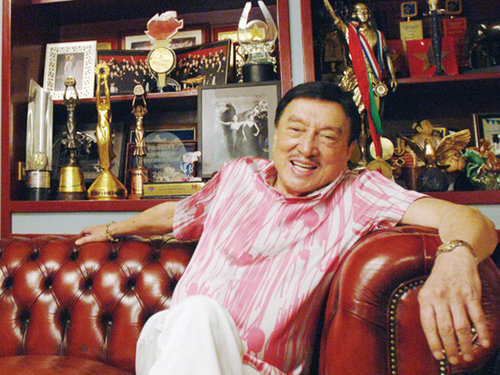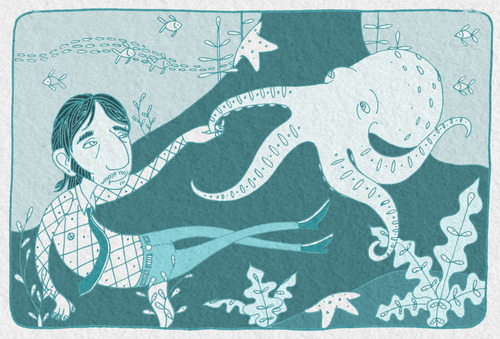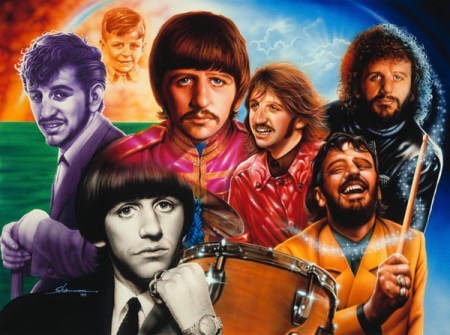Parang kailan lang ang mga pangarap ko’y kay hirap abutin. Dahil sa inyo napunta ako sa nais marating. Nais ko kayong pasalamatan kahit man lang sa isang awitin.
Parang kailan lang halos ako ay magpalimos sa lansangan. Dahil sa inyo ang aking tiyan at ang bulsa’y nagkalaman. Kaya’t itong awiting aking inaawit nais ko’y kayo ang handugan.
Tatanda at lilipas din ako nguni’t mayroong awiting iiwanan sa inyong alaala dahil, minsan, tayo’y nagkasama.Parang kailan lang ang mga awitin ko ay ayaw pakinggan. Dahil sa inyo, narinig ang isip ko at naintindihan. Dahil dito ibig ko kayong ituring na matalik kong kaibigan.
I first heard and learned this song when I was in grade two (mid-nineties). It was the celebration of teacher’s day in our school and we were asked to sing this song during the program. As what most of the students that age would do, whether we liked it or not, we sung in unison, swaying our heads and our bodies, because the teacher told us to do so. Never mind if some aren’t actually singing (and just a mere chuwariwap on the background). Never mind if some are out of tune. Never mind if some are horsing and laughing during the presentation. We learned the song, we performed it on stage in front of the teachers, and we went back to our usual activities.
There are some who would say that kids that age would never truly understand the meaning of the song. It is the period of early childhood where thet usually devote more time on playing above any other else. Yes, it may be touching to see them singing this heart-warming song but from their perspective, it may appear as just a mere presentation, some activity forced by the elders to do.
I may have not appreciated the whole meaning of the song when I was in grade two but I haven’t forgotten it. And growing up, I had other different encounters with this masterpiece. I came across an old movie on Pinoy Blockbusters (pre-Cinema One channel) with Subas Herrero and other famous actors and actresses of that time. I forgot the title but on the end part, they sung Handogand Subas adressed the viewers about the dedication and legacy of the artists, movie makers, and workers. (I tried searchig the internet for the title of the movie but I don’t know where to start. Please drop me a message if you know the title.) During the ‘band explosion’ of 2006, the group Join The club made their own version of the song and it was included in the The Best of Manila Sound: Hopia Mani Popcorn compilation. And in 2008, Kenyo used the chorus of the song in the mash-up of their carrier single Sana in their debut album Radiosurfing.
Handog was composed and popularized by folk rock singer Florante de Leon (who is popularly known as Florante). He was one of the pioneers and exponents of Pinoy folk rock during the musical boom of the 1970’s. His songs are part of the famous musical genre of that time called Manila Sound. Such was the beauty of the song that other artists and groups revived it and used it in movies and other productions.
There is something with the Filipino songs of that time that puts a smile in our faces aside from nostalgia. They are simple yet full of meaning; subtle yet they touch the hearts even of the simplest Filipinos; gentle without trying to be mushy; and you can easily grasp its soul and pass it to the next generation. What’s the evident proof? Those songs are being revived by solo singers and artists of today (even just for the sake of releasing their own record - of covers).

On the evening of July 10, the Philippine cyber space exploded with a shocking news: the Comedy King, our national treasure, Dolphy Quizon, passed away. Almost all of us, even our parents and grandparents, grew up watching and laughing with Mang Dolphy. The whole nation wept and grieved on the loss of one of our (if not the) finest jester and painkiller. If laughter is indeed the best medicine, then we have lost the pill that cured millions of Filipinos.
It wasn’t until then that I found out that he also has his own version of Handog. Almost all TV stations played the song in remembrance of the man’s legacy which spanned for almost six decades. Or thirteen Philippine Presidents (fourteen if you will include Fernando Poe, Jr.)
Suddenly, the song has another meaning, impact, and spirit. The song’s poetry fits Mang Dolphy. Perhaps because of all the features on the news programs, we are now familiar with Mang Dolphy’s journey from humble beginnings to being the Comedy King that we know today.
But personally, there is more than this song. Listening to the song, I remember the old days when we are singing this song in front of our teachers. I may have not understood its real meaning then but what struck me is the age when I sung it. It was the age of innocence and carelessness. It is also the good old days when the whole family, and perhaps the whole nation, laughed and cried with the Cosme family in Home Along Da Riles. It is good to remember those days once in a while to remind us of our innocence, dreams, purity, and happiness. It serves as a reminder or a pensieve whenever we are down and weary with life’s hardships.
Some would say that comedy is just an opium, a temporary escapism from the realities of this life. But it is with the laughter that we get our strength, our positivism, and good memories.
Perhaps it is Mang Dolphy’s eternal handog to all of us: That from time to time, we must laugh, forget our problems, and face this life with an uplifted spirit. His death is not the end because he has already been immortalized by his legacy to the Filipino people. He even left us a line that pertains to his immortality and I quote: “Hinding-hindi ako mahihiwalay sa inyo. Pindutin niyo lang ang play at siguradong magkakasama-sama tayo.”
Maraming maraming salamat sa inyong handog at paalam, Mang Dolphy.
Elsewhere:
- Dolphy: A True Story - A Comprehensive Obituary on Mang Dolphy
- Timeline: Dolphy - The Life of Mang Dolphy - Facebook Timeline style.

